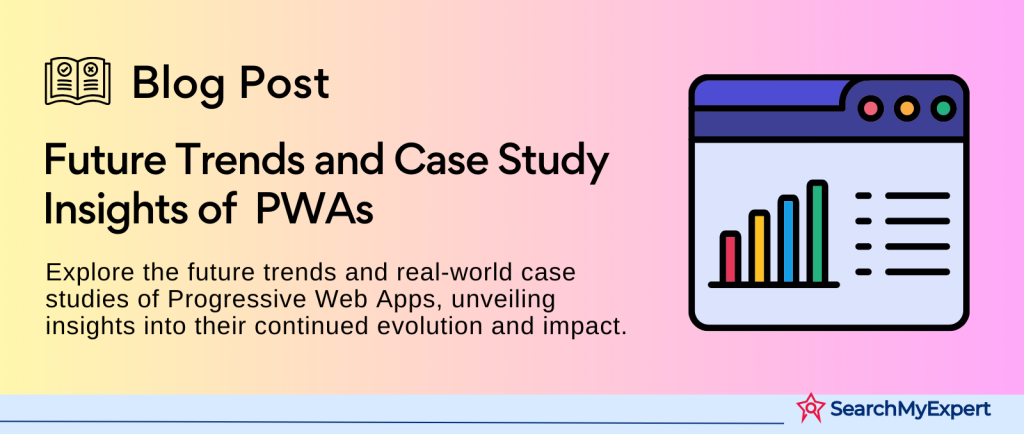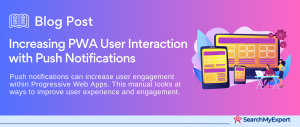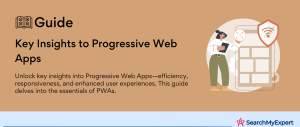Understanding Progressive Web Apps (PWAs): A Comprehensive Introduction
What Are Progressive Web Apps (PWAs)?
Progressive Web Apps (PWAs) represent a revolutionary approach in the digital landscape, bridging the gap between traditional websites and native mobile applications. They are web applications built using standard web technologies but with the feel and functionality of a native app. This innovative technology offers a unique combination of the best features of both websites and native applications, making it a game-changer in the world of web and mobile app development.
Key Features of PWAs:
- Responsiveness:
PWAs are designed to provide an optimal viewing experience across a wide range of devices, from desktops to mobile phones. They automatically adjust their layout to fit different screen sizes and orientations. - Offline Functionality:
One of the most significant advantages of PWAs is their ability to work offline or with low-quality internet connections. This is made possible through service workers, which cache essential app resources. - App-like Experience: Despite being web-based, PWAs offer a user experience that closely resembles native apps. This includes smooth navigation, fast loading times, and the ability to send push notifications.
- No App Store Requirements: Unlike native apps, PWAs don’t need to be downloaded from app stores. They can be easily accessed via a web browser, simplifying the distribution process.
- Safe and Secure:
PWAs are served via HTTPS, ensuring that the user data is secured and protected from unauthorized access and tampering.
Advantages Over Traditional Websites and Native Apps:
- Speed:
PWAs load faster than traditional websites, offering a seamless user experience. - Engagement:
The ability to send push notifications helps in maintaining user engagement. - Cost-Effective:
Developing a PWA is often more cost-effective than building separate native apps for different platforms. - Discoverability:
Being web-based, PWAs have the advantage of being discoverable through search engines.
Why Study Case Studies of Successful PWAs?
Studying case studies of successful PWAs is crucial for understanding their real-world impact and potential. By analyzing these examples, businesses and developers can gain insights into:
- How PWAs Solve Challenges: Case studies provide a clear picture of the challenges faced by businesses and how PWAs helped overcome them. This includes issues like poor mobile experience, low engagement, and high development costs.
- Benefits in Action:
Seeing the tangible benefits that other companies have experienced with PWAs, such as increased conversion rates, higher user engagement, and improved performance, can be a powerful motivator. - Innovation and Creativity: Case studies showcase how different industries have innovatively used PWAs, offering inspiration for others to explore unique ways to leverage this technology.
- Best Practices:
They serve as a valuable resource for understanding the best practices in PWA development, from design to implementation and user experience optimization.
Diverse Industries Embracing Progressive Web Apps: A Multifaceted Approach
The flexibility and efficiency of Progressive Web Apps (PWAs) have made them a preferred choice across a wide spectrum of industries. Each sector, with its unique challenges and customer demands, finds a tailored solution through the adoption of PWAs. Let’s delve into the various industries where PWAs have made a significant impact.
E-Commerce: Enhancing Shopping Experiences
In the e-commerce world, PWAs have revolutionized the way customers shop online. Key players in this industry have adopted PWAs to address common issues such as slow loading times, poor mobile experience, and abandoned carts due to a cumbersome checkout process. PWAs provide a seamless, app-like shopping experience that keeps customers engaged and significantly increases conversion rates.
Travel and Hospitality: Streamlining Bookings and Information Access
Travel and hospitality businesses have turned to PWAs to provide travelers with easy access to information and booking tools. These apps efficiently address the need for offline access to travel itineraries, booking confirmations, and local guides, enhancing the overall travel experience.
News and Media: Boosting Content Accessibility and Engagement
News and media outlets have embraced PWAs to combat the challenges of slow-loading websites and the need for real-time news updates. PWAs offer instant access to news content, even in low connectivity areas, ensuring that readers stay informed and engaged.
Messaging and Social Media: Seamless Communication
For messaging and social media platforms, PWAs provide an effective solution to the problem of app fatigue. Users can enjoy a lightweight, fast, and interactive experience without the need to download heavy native apps.
Entertainment and Gaming: Enriching User Experience
The entertainment and gaming industry benefits from PWAs through improved user engagement and retention. These apps offer high-quality graphics and performance, akin to native apps, but with the added advantage of not requiring users to download large files.
Common Challenges Addressed by PWAs
- Low Mobile Website Engagement:
PWAs, with their app-like interface, improve the mobile browsing experience, leading to higher user engagement and retention. - High Development and Maintenance Costs:
Building a PWA is generally more cost-effective than developing separate native apps for different platforms. This reduces both initial development and ongoing maintenance costs. - Data Concerns in Low Connectivity Areas:
PWAs can operate efficiently in areas with poor internet connectivity, even offline, making them ideal for users in remote or low-signal areas. - Offline Accessibility:
The offline functionality of PWAs addresses a critical need in many industries, providing continuous access to information and services even without an internet connection. This feature is particularly beneficial for users who travel frequently or reside in regions with unstable internet. - Cross-Platform Compatibility:
PWAs eliminate the need to create different versions of an app for various operating systems, as they are accessible through any standard web browser. - Security Concerns:
With the use of HTTPS, PWAs offer enhanced security features, safeguarding user data from potential threats. - Updating Issues:
PWAs update themselves just like web pages, ensuring that users always have the latest version without the need for manual updates. - User Experience Optimization:
With their ability to mimic native app functionality, PWAs provide a superior user experience compared to traditional mobile websites.
Case Study 1: Trivago’s Leap to Mobile Engagement with PWA
Background: The Trivago Challenge
Trivago, a renowned global hotel search platform, connects users with various accommodation options from multiple booking sites. Despite its success, Trivago confronted a significant challenge in mobile engagement. Their mobile website struggled to match the user experience offered by native apps, leading to lower engagement and conversion rates on mobile devices. This gap posed a critical obstacle in an increasingly mobile-first world.
PWA Implementation: A Strategic Move
In response, Trivago turned to Progressive Web App (PWA) technology to enhance its mobile user experience. The PWA solution was designed with a focus on several key features:
- Offline Browsing Capability:
Recognizing the importance of continuous access, Trivago’s PWA allowed users to browse hotel offers and information even in offline mode or in areas of low connectivity. - Push Notifications:
Trivago harnessed the power of push notifications to keep users informed about the latest deals, updates, and personalized offers, effectively increasing user engagement. - Home Screen Installation: The PWA offered users the option to add Trivago to their home screen. This feature ensured easier access, akin to a native app, but without the need for downloading and installing a separate application.
Results: A Testament to PWA’s Efficacy
The results of implementing the PWA were noteworthy:
- Increased User Engagement: Trivago experienced a significant surge in user engagement. The app-like experience provided by the PWA led to users spending more time browsing and interacting with the platform.
- Higher Conversion Rates:
The seamless, fast, and interactive nature of the PWA resulted in a noticeable increase in conversion rates. Users were more likely to complete bookings through the mobile interface, demonstrating the effectiveness of the PWA in enhancing the mobile user journey. - Boost in Repeat Visits:
The ease of access through home screen installation and the utility of offline browsing contributed to a rise in repeat visits. Users returned more frequently to Triv
Case Study 2: Flipkart’s PWA – Marrying the Best of Web and App
Background: Flipkart’s Digital Dilemma
Flipkart, a leading e-commerce giant in India, faced a critical juncture in its digital strategy. Initially adopting an app-only approach, Flipkart soon realized the limitations of excluding web users. Their mobile website, while accessible, was not delivering the performance and user experience expected by their vast customer base. This gap in service delivery was particularly noticeable in regions with low-bandwidth connections, affecting customer retention and overall satisfaction.
PWA Solution: A Strategic Pivot
To address these challenges, Flipkart pioneered the development of a Progressive Web App, named ‘Flipkart Lite’. This strategic shift aimed to blend the best attributes of web and app experiences. The PWA incorporated several key features:
- App-Like Interface:
Flipkart Lite offered an app-like user interface, providing a familiar and seamless experience to mobile users. - Low Data Usage: Recognizing the connectivity constraints of their user base, the PWA was optimized for low data consumption, ensuring accessibility even in low-bandwidth scenarios.
- Offline Functionality:
The inclusion of offline capabilities allowed users to browse products and read reviews even without an active internet connection. - Fast Performance:
The PWA’s lightweight nature contributed to rapid page loading, enhancing the overall user experience.
Results: A Turnaround in Performance
The introduction of Flipkart Lite had a profound impact:
- Improved Conversion Rates:
The PWA led to a significant increase in conversion rates, as users found the app-like experience more engaging and user-friendly. - Reduced Bounce Rate:
The faster loading times and enhanced usability of the PWA resulted in a lower bounce rate. Users were more inclined to stay on the platform and explore its offerings. - Increased Accessibility:
With its efficient performance on low-bandwidth connections, Flipkart Lite became accessible to a broader audience, particularly in regions with limited internet connectivity.
Flipkart’s PWA served as a game-changer, effectively bridging the gap between the capabilities of a native app and the accessibility of a website. By combining the strengths of both platforms, Flipkart not only enhanced its user experience but also expanded its reach, catering to a wider audience with varying internet accessibilities. The positive outcomes of improved conversion rates, reduced bounce rates, and heightened accessibility underline the transformative impact of PWAs in the e-commerce sector.
Case Study 3: Uber’s Transformation Through PWA
Background: Uber’s Challenge in Accessibility and Performance
Uber, the global ride-hailing leader, faced significant challenges in making its service accessible and efficient for users across diverse network conditions. In regions with limited or unstable internet connectivity, users experienced difficulty in accessing the service, leading to reduced customer satisfaction and potential loss of market share.
PWA Solution: Enhancing User Experience
Uber addressed these issues by developing a Progressive Web App (PWA) aimed at enhancing performance and accessibility. The Uber PWA focused on key areas:
- Offline Functionality:
By utilizing service workers, Uber’s PWA enabled users to book rides even in areas with limited or no internet connectivity, significantly improving accessibility. - Optimized Performance:
The PWA was designed to provide faster load times and smoother transitions, delivering a more seamless user interface. This optimization was crucial for maintaining a high-quality user experience, particularly in areas with slow network speeds. - Minimized Data Usage:
Understanding the constraints of data usage in various regions, Uber’s PWA was optimized to consume minimal data, ensuring a broader reach and usability.
Results: A Leap in Engagement and Bookings
The implementation of the Uber PWA led to remarkable outcomes:
- Increased User Engagement:
The faster loading times and smoother user experience resulted in higher levels of user engagement and satisfaction. - Expanded User Base:
The offline functionality and low data usage broadened Uber’s reach, especially in regions with poor connectivity, thereby expanding its user base. - Improved Customer Satisfaction:
The ease of access and improved performance of the PWA enhanced overall customer satisfaction, leading to increased repeat bookings.
Key Takeaways and Success Factors of Progressive Web Apps
Recurring Themes in PWA Success Stories
Across diverse industries, from e-commerce giants like Flipkart to service providers like Uber, the implementation of Progressive Web Apps (PWAs) has consistently led to remarkable success. Analyzing these case studies reveals several recurring themes and key success factors:
- Enhanced User Experience:
A primary factor in the success of PWAs is the significantly improved user experience. Features like offline functionality, fast loading times, and an app-like interface provide a seamless and engaging experience. - Increased Engagement and Conversion: PWAs have consistently demonstrated their ability to boost user engagement. This is largely due to their push notification capabilities, efficient performance, and ease of access, leading to higher conversion rates.
- Optimized Performance Across Devices:
The ability of PWAs to deliver consistent and high-quality performance across various devices and network conditions is a critical success factor. This adaptability ensures a wide reach and inclusivity for users from different regions and with different devices. - Cost-Effective Development and Maintenance: Another key factor in the success of PWAs is the reduced cost of development and maintenance compared to traditional web and mobile applications. This affordability makes PWAs an attractive option for businesses.
General Benefits of PWAs for Businesses
Apart from the specific advantages observed in the case studies, PWAs offer a range of general benefits that make them a compelling choice for businesses:
- Improved User Experience:
PWAs offer an intuitive, fast, and reliable user experience that rivals native apps, leading to increased customer satisfaction. - Increased User Engagement:
With features like push notifications and offline access, PWAs keep users engaged, leading to higher repeat visits and sustained interaction. - Reduced Development Costs:
Developing a PWA is generally more cost-effective than building native apps for multiple platforms. This leads to savings in both development and ongoing maintenance costs. - Better Performance on Limited Connectivity:
PWAs work effectively even in low connectivity areas, making them accessible to a broader audience. - Ease of Access and Distribution:
Unlike native apps, PWAs don’t require installation from app stores, making them easily accessible via a browser and simplifying the distribution process. - SEO Advantages: Being web-based, PWAs can be indexed by search engines, which enhances their discoverability and provides SEO benefits, potentially increasing traffic and user acquisition.
- Cross-Platform Compatibility:
PWAs are compatible across various platforms and devices, ensuring a wider reach and eliminating the need for multiple versions of the same application.
The Future of Progressive Web Apps: A Horizon of Opportunities
As we look ahead, the trajectory of Progressive Web Apps (PWAs) suggests a future brimming with growth and innovation. The success stories of businesses like Trivago, Flipkart, and Uber, among others, have paved the way for wider adoption and exploration of this technology. Here’s a glimpse into the future trends and potential of PWAs:
Continued Evolution and Technological Advancements
- Integration with Emerging Technologies: PWAs are expected to increasingly integrate with cutting-edge technologies like augmented reality (AR), virtual reality (VR), and artificial intelligence (AI), providing more immersive and personalized user experiences.
- Enhanced Performance and Functionality:
Future developments in service workers and caching strategies will likely result in even faster and more reliable PWAs, further closing the gap between native apps and web applications. - Greater Device Compatibility: As support for PWAs grows among major technology players, expect to see improved compatibility and features on various devices, including wearables and IoT devices.
Increased Business Adoption and Market Penetration
- Broader Industry Application:
The versatility of PWAs makes them suitable for a wide range of industries. More businesses are likely to embrace PWAs to enhance customer engagement, streamline operations, and tap into new markets. - Focus on User-Centric Solutions:
The shift towards user-centric approaches in digital solutions will fuel the growth of PWAs, as they offer a seamless, efficient, and accessible user experience. - E-commerce and Retail Revolution: PWAs are set to play a significant role in reshaping the e-commerce and retail landscapes, offering advanced features like offline shopping and push notifications for promotions and updates.
Call to Action: Embrace the PWA Revolution
If you’re a business owner or decision-maker, now is the time to consider adopting a Progressive Web App for your enterprise. The potential gains are substantial:
- Enhanced User Engagement:
Leverage the app-like experience of PWAs to keep your customers engaged and satisfied. - Cost-Effective Development:
Save on development and maintenance costs compared to traditional apps. - Increased Conversions and Sales:
Improve your conversion rates with fast, reliable, and intuitive user experiences. - Wider Reach and Accessibility:
Reach a broader audience, including those in areas with limited internet connectivity or on less advanced devices.
Available Resources and Support
Embracing PWAs doesn’t have to be a daunting task. Numerous resources are available to assist in your journey:
- Development Tools and Platforms: Tools like PWABuilder and Lighthouse offer an easy entry point for creating and optimizing your PWA.
- Professional Guidance:
Consider consulting with digital strategy experts or agencies specializing in PWA development for tailored advice and solutions. - Community and Forums:
Engage with online communities and forums to learn from others’ experiences and keep abreast of the latest trends and best practices in PWA development.
Conclusion:
Progressive Web Apps represent a significant milestone in the digital landscape, offering a blend of the best features of web and mobile applications. The success stories of Trivago, Flipkart, and Uber, among others, highlight the versatility and efficacy of PWAs in addressing diverse business challenges and enhancing user engagement. With the continuous evolution of technology, PWAs are poised for further growth and innovation, making them an essential consideration for businesses aiming to stay ahead in the digital era. Whether you’re looking to improve user experience, increase engagement, or reduce development costs, PWAs provide a robust, future-proof solution. Embrace the potential of Progressive Web Apps and transform your digital strategy today.
Partner with creative Progressive Web App Service Agencies for impactful PWAs.
Table of Contents
Toggle






